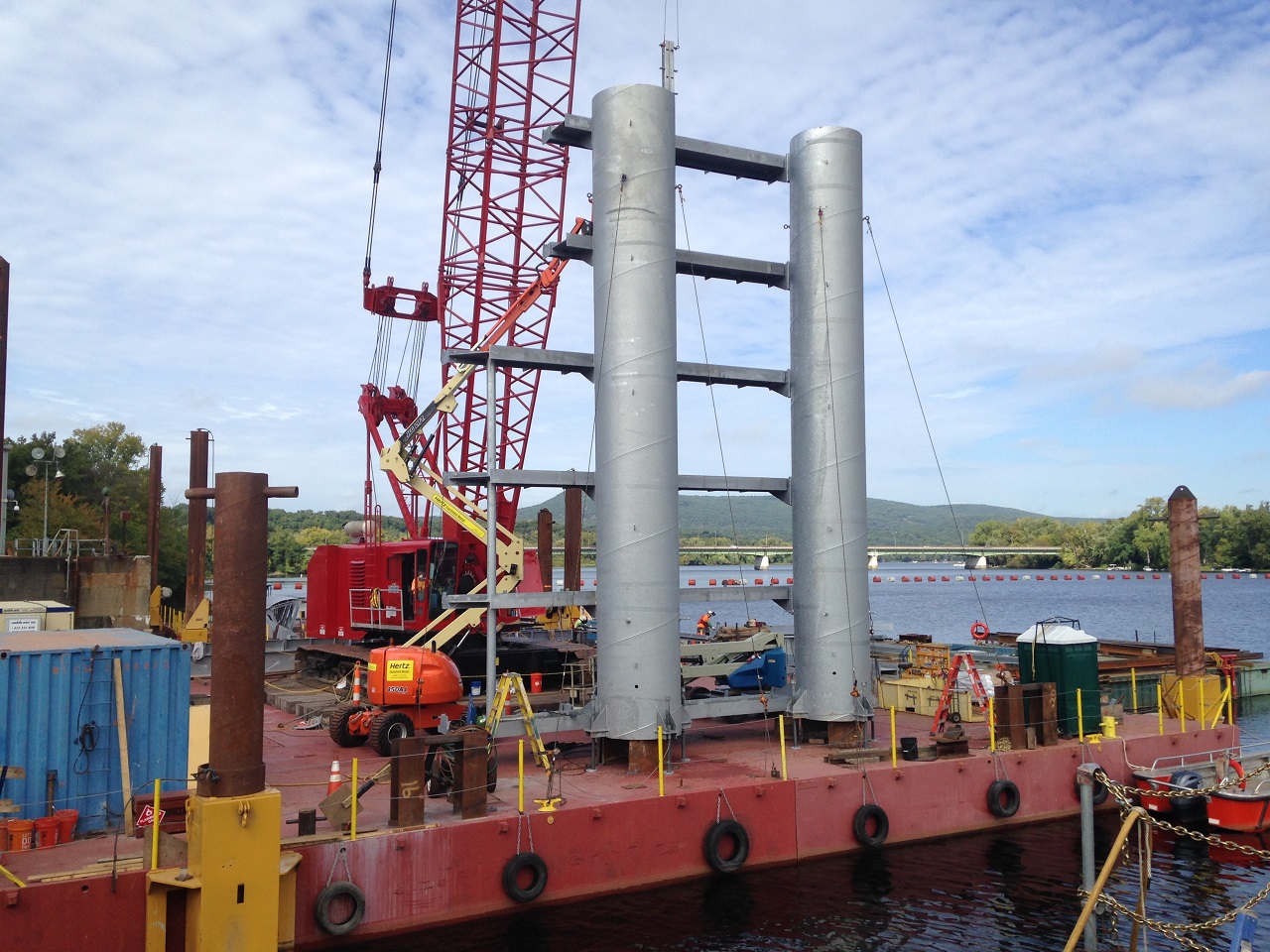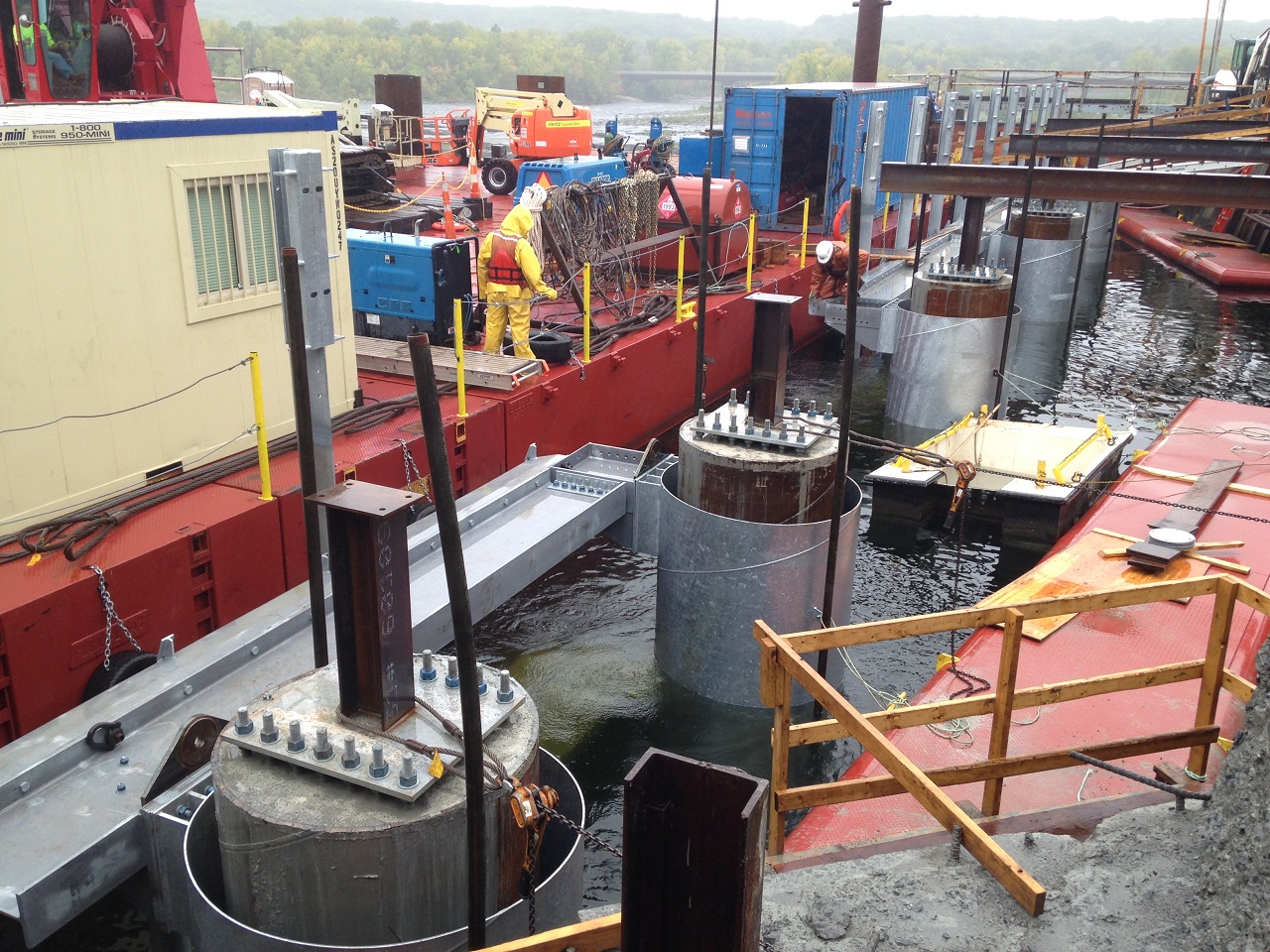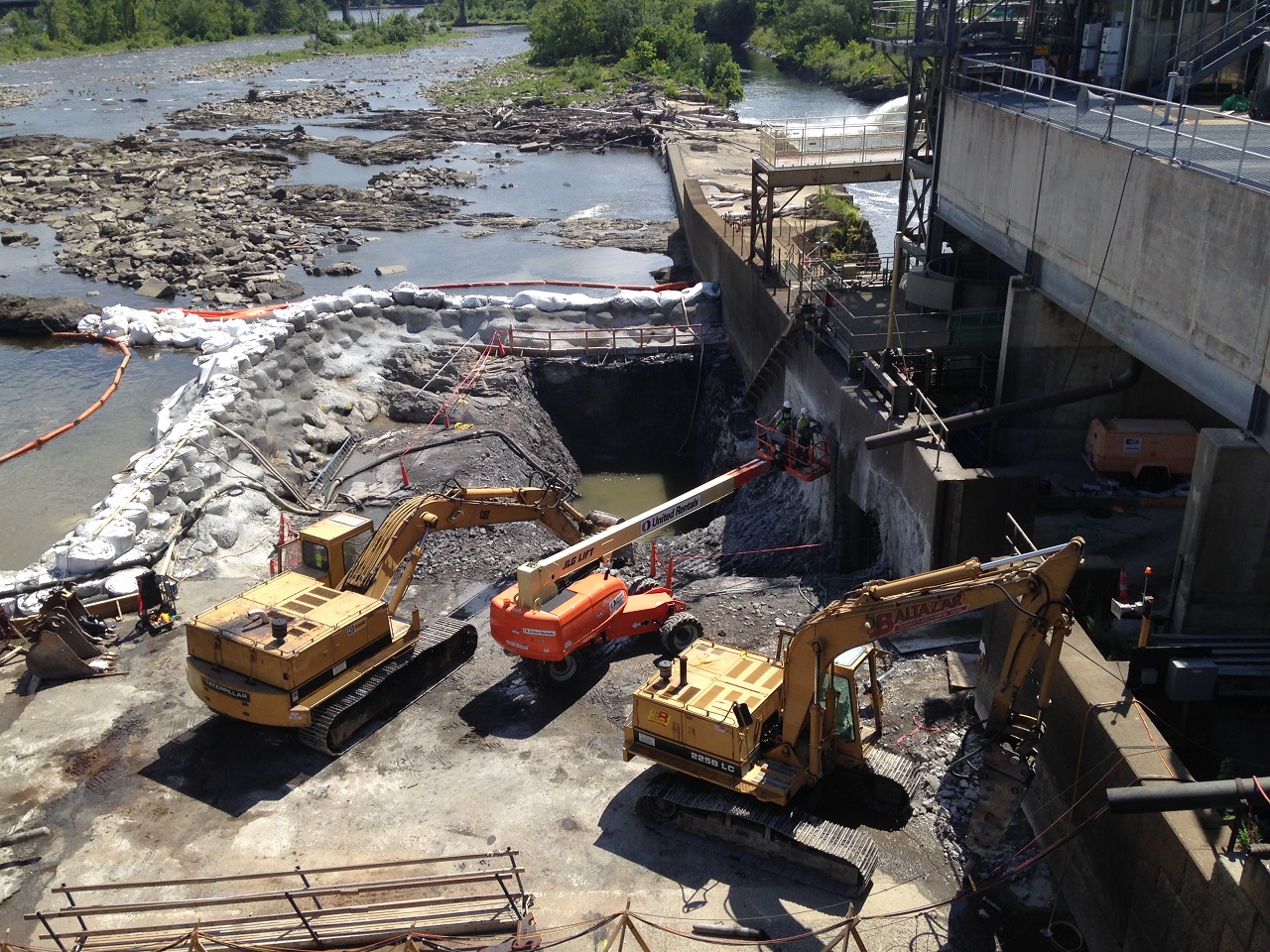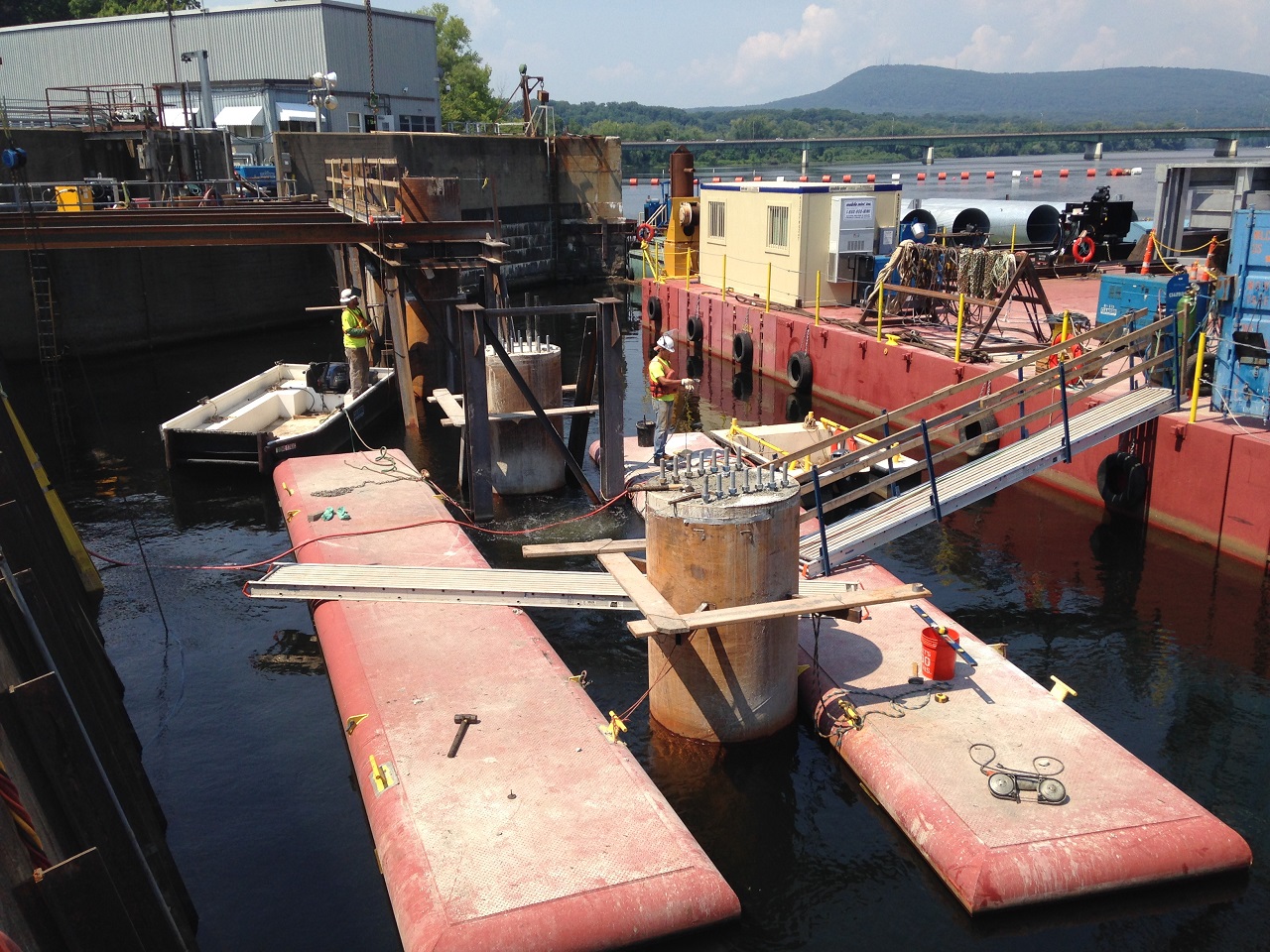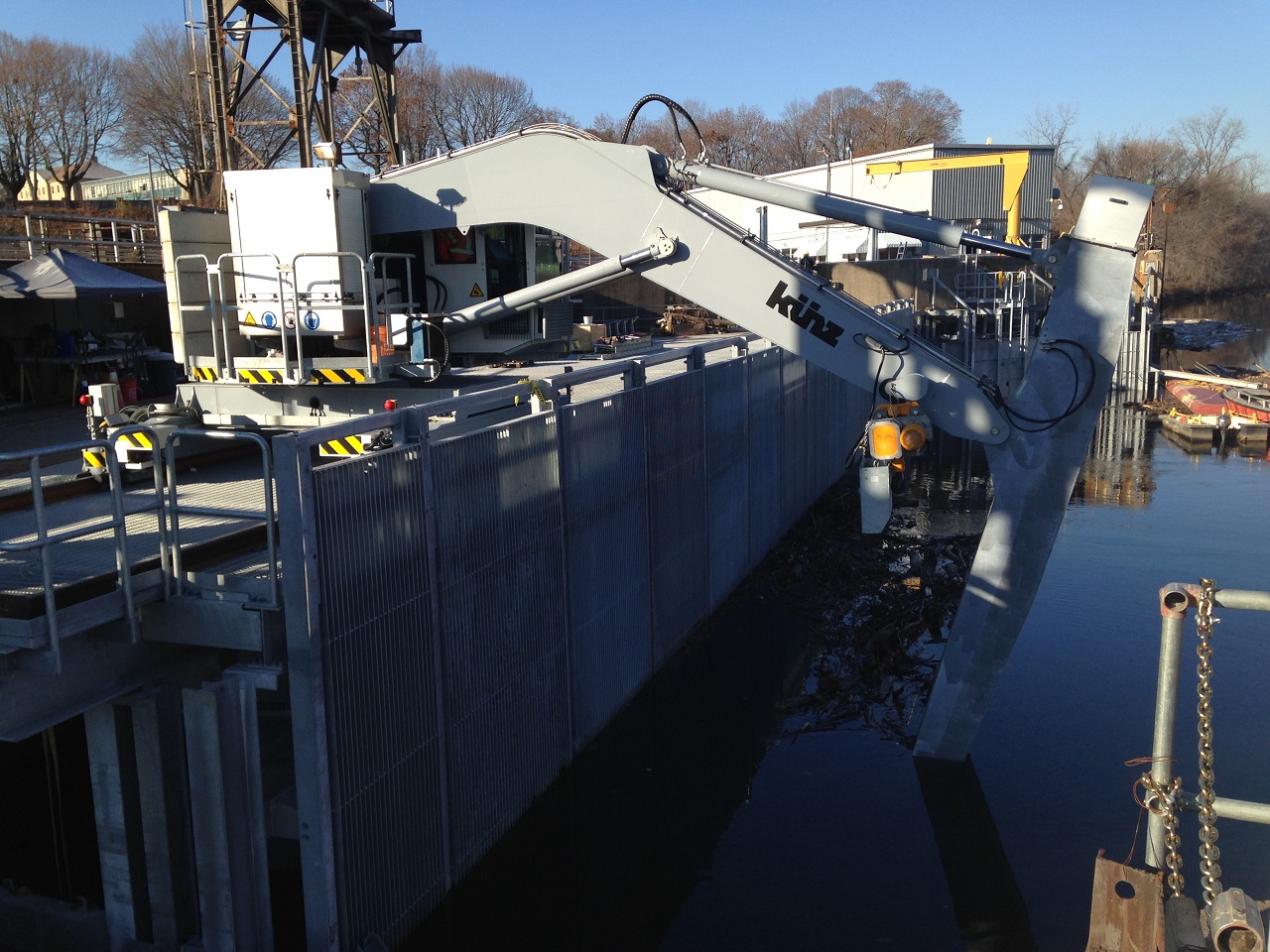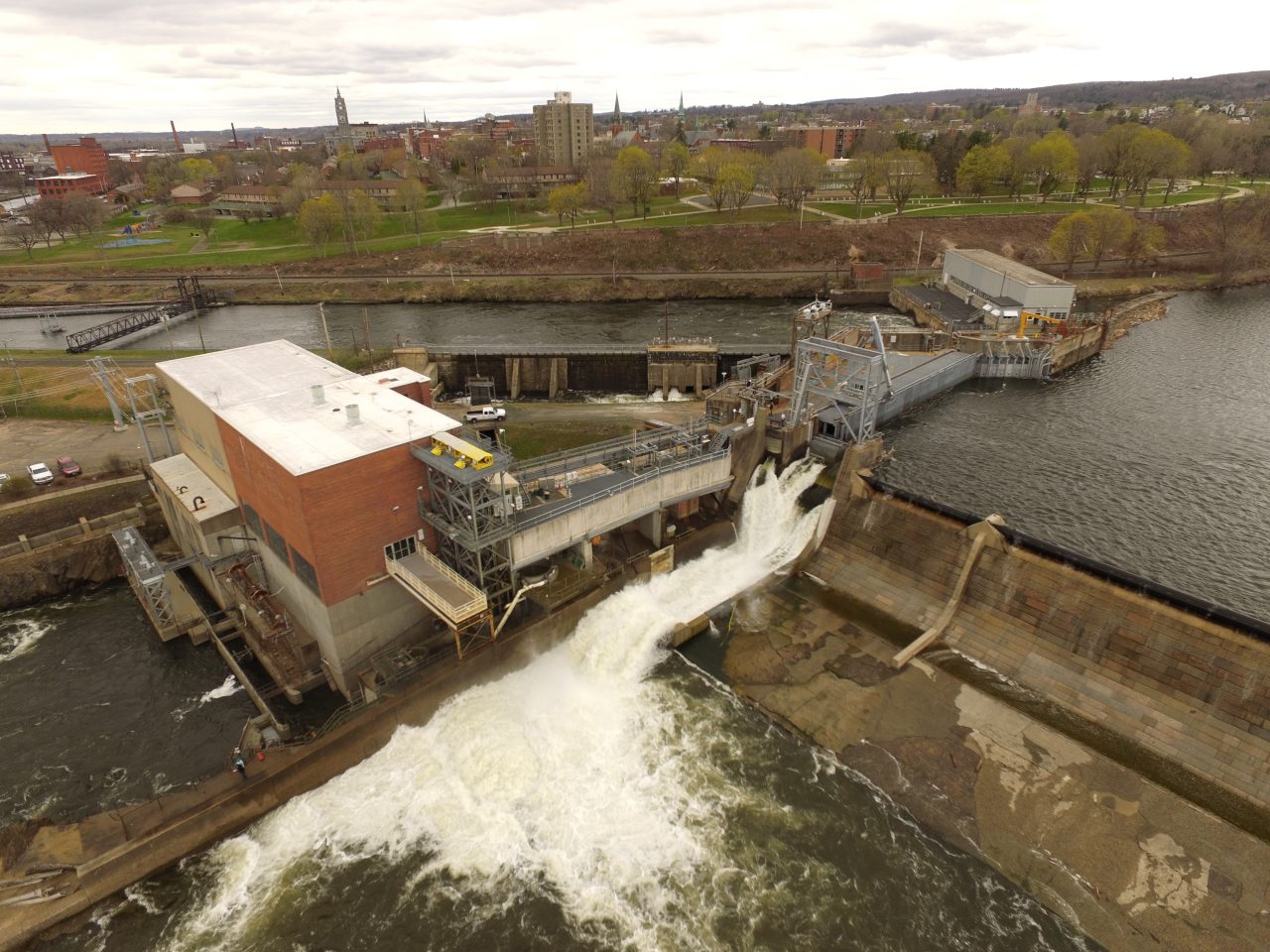Project Description:
The City of Holyoke Gas & Electric Department (HG&E) owns and operates the Holyoke Dam and a hydroelectric facility located on the Connecticut River in the City of Holyoke, Massachusetts. The Holyoke Dam is a 30-foot high, 985-foot long granite dam that spans the Connecticut River between Holyoke and South Hadley. The dam is used to divert water from the river into the Holyoke Canal System and HG&E’s Hadley Falls Facility. The Hadley Falls Facility, located on the Holyoke side of the Holyoke Dam, contains two hydroelectric generating wheels totaling an installed capacity of approximately 30 megawatts. Pursuant to a 1999 Federal Energy Regulatory Commission license agreement, HG&E was required to construct fish passage enhancements at the Hadley Falls Facility to benefit the federally endangered Shortnose Sturgeon (SNS).
On Point Services:
2012:
On Point was first contracted by HG&E in late 2012 to provide an overall constructability and cost analysis on the progress prints of a passage enhancement design. On Point determined that this proposed design, which consisted of an inclined exclusion bar rack spanning 150 feet in length in water depths of 35-feet, ultimately proved too costly. Construction would require two construction seasons to build, which would impact HG&E’s ability to generate hydroelectric power. In early 2013 On Point provided HG&E with conceptual drawings of a vertical exclusion bar rack utilizing drilled shafts as the primary foundation system, as well as an overall construction schedule for the entire project, which was determined to require one season, and lastly a construction cost estimate that was within HG&E’s project budget.
2013:
By mid-2013, HG&E had contracted with a new engineer to commence with the structural design of the drilled shaft exclusion rack concept. The vertical exclusion rack, which would be constructed in front of the existing hydroelectric intake penstocks, would ultimately improve downstream fish migration by providing an increased zone of separation from intake flow velocities, as well as reducing the number of fish and debris from entering the hydroelectric facility. In addition to the exclusion rack, the design proposed the construction of a flow deflector and “training wall” on the existing dam apron, as well as a fish plunge pool just beyond the dam apron to be excavated within the existing rock riverbed. These apron area enhancements would serve to create improved fish migration both upstream and downstream.
2014:
From mid-2013 through mid-2014 On Point assisted HG&E with overall design and permit review to confirm that the original drilled shaft concept was maintained to ultimately ensure that constructability, construction cost, and schedule goals were satisfied. On Point additionally prepared and maintained a design development and permitting CPM schedule to facilitate a desired project bid date of late 2014. In addition to the design / permitting CPM schedule, On Point assisted HG&E with the development of major elements of the Invitation to Bid package, ranging from contractor experience evaluation criteria, schedule milestones, limitations of operations, and incentives/disincentives. By December 2014, HG&E had selected a contractor whose bid price, proposed schedule, and overall qualifications met all contract requirements and project goals.
2015:
Throughout 2015, On Point served as HG&E Owner’s Project Manager for the duration of the construction phase and assisted with submittal review, contractor’s schedule analysis, payment estimate preparation, conflict resolution, and daily construction inspection and oversight. This challenging and fast-paced project required crane-on-barge construction techniques, coupled with underwater construction methodologies in order to meet project milestones. The contractor ultimately achieved project wide substantial completion in late November 2015, ahead of contract requirements. The project has been deemed a major success by HG&E, as not only were schedule, cost, and quality goals met, but the 2016 Fish Passage Season proved to be the most successful seasons for Shortnose Sturgeon in the history of the Hadley Falls facility.
